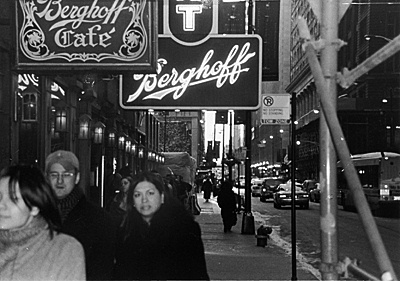All Nonfiction
- Bullying
- Books
- Academic
- Author Interviews
- Celebrity interviews
- College Articles
- College Essays
- Educator of the Year
- Heroes
- Interviews
- Memoir
- Personal Experience
- Sports
- Travel & Culture
All Opinions
- Bullying
- Current Events / Politics
- Discrimination
- Drugs / Alcohol / Smoking
- Entertainment / Celebrities
- Environment
- Love / Relationships
- Movies / Music / TV
- Pop Culture / Trends
- School / College
- Social Issues / Civics
- Spirituality / Religion
- Sports / Hobbies
All Hot Topics
- Bullying
- Community Service
- Environment
- Health
- Letters to the Editor
- Pride & Prejudice
- What Matters
- Back
Summer Guide
- Program Links
- Program Reviews
- Back
College Guide
- College Links
- College Reviews
- College Essays
- College Articles
- Back
Pollution, Waste and Conservattion MAG
We like our life in the U.S. We enjoy allthe conveniences that our cars, fast-food restaurants and shopping mallsprovide. In our enjoyment we forget about the effect these things willhave on us and wildlife both today and in the future. Let’s thinkfor a minute. When was the last time you ate at McDonald’s? If youare like a lot of people I know, you probably grabbed a handful ofnapkins even though you only needed a couple. How about the wrapper onthe Big Mac or the bag it came in? Did you need it? How many packets ofketchup were you given? Did you use them all?
The last time youwent to the supermarket, how many bags did you use? Most likely yourgroceries were double bagged. Was that necessary? And where did thosebags end up? In the trash, or recycled? Maybe you were environmentallyconscious and used them the next time you went to the supermarket. Whatabout the produce section, was it really necessary to put your melon ina plastic bag?
In so many situations, we satisfy a short-termneed by cutting trees and wasting resources. Just getting to schooltoday required riding in a vehicle that polluted the air and consumedgas.
We must try to minimize the amount of pollution to limitthe impact on the environment, animals and us. In very simple language,we need to reduce, reuse and recycle.
Perhaps you thinkthat the waste created by your consumption is not significant, solet’s look at some facts. England, which is much smaller thanAmerica, uses over six billion glass bottles and jars each year. Youwould need a forest the size of Rhode Island to produce the paperBritain uses each year. The world consumes 80 million tons of plasticevery year - 20 times more than in 1950!
To produce most plasticitems, we need oil, which is generally imported by ship, and thatcreates the possibility of oil spills. It not only pollutes our beachesbut harms sea animals. For example, when the Exxon Valdez ran aground,sea otters were covered in oil. Their fur became matted, reducing itsability to warm their bodies. As they licked themselves clean, theyswallowed the poisonous oil. Can you imagine drinking oil? It is easy tostop people from swimming in polluted water, but sea animals have nochoice - it’s their home.
In our desire to manufactureplastic bottles and bags that we use without even thinking, we run therisk of polluting our beaches and harming sea animals. Then there isadditional pollution when the bottles and cans are tossed into the oceanand swallowed by sea life.
Most of us don’t see the impactthat our consumption of paper has on forests. Since 1970, over 14% ofthe Amazon rainforest has been destroyed. That may not sound like a lot,but it is about the size of Texas (or France). Amazing! By using as muchpaper as we do, we destroy a forest the size of a football field everytwo seconds - over 43,000 football fields every day! The consumption ofpaper and oil depletes our natural resources and contributes to globalwarming.
Americans also use more air conditioning which meansmore electricity that is generated from burning gas, oil or coal. Thisis a vicious cycle depleting our natural resources. While itcannot be completely stopped, we can slow it down. One thing we can dois buy snacks with less packaging. Make your own pizzas or cookiesbecause then there is no packaging. Use both sides of a piece of paperwhen you are drawing, writing and photocopying. Also think before usingsomething - do you really need to do it?
So let’s continueenjoying ourselves, but be conscious of our consumption and askourselves each time if we need what we’re about to consume.

Similar Articles
JOIN THE DISCUSSION
This article has 2 comments.

6 articles 0 photos 2 comments